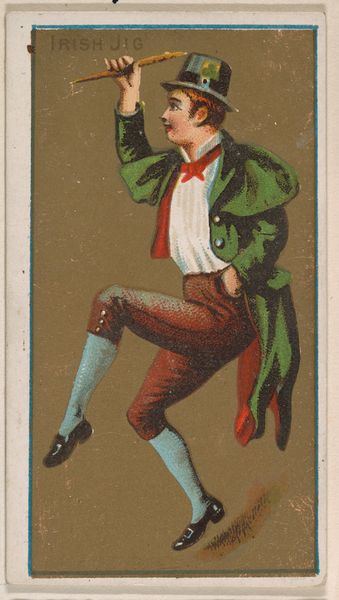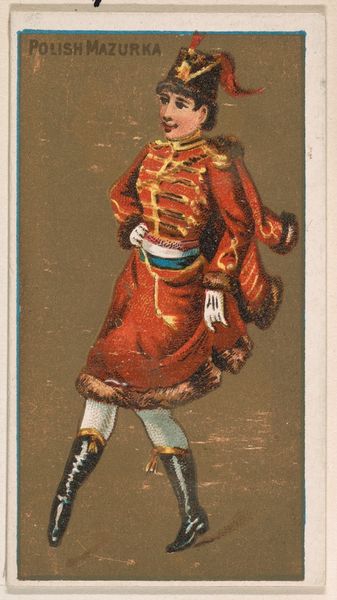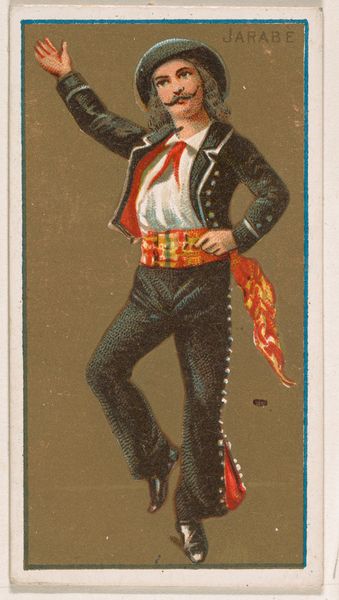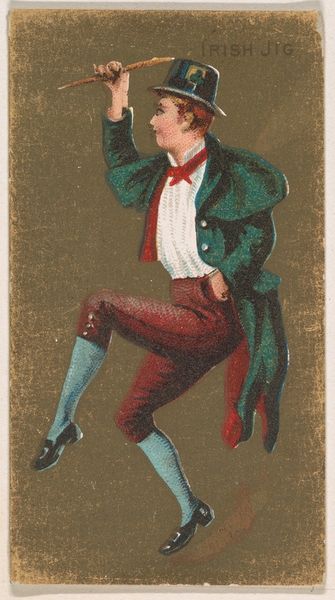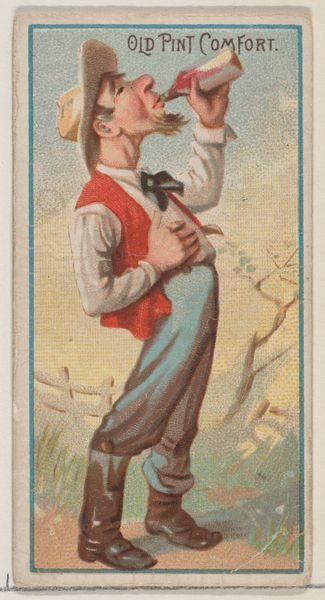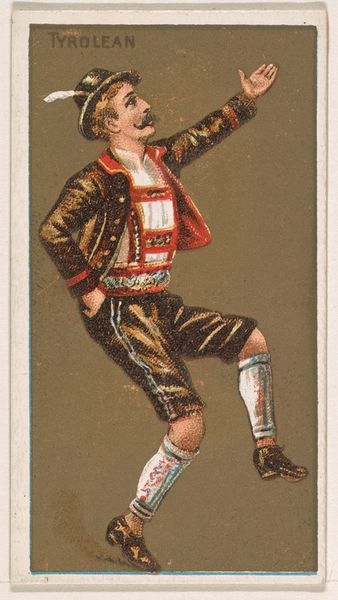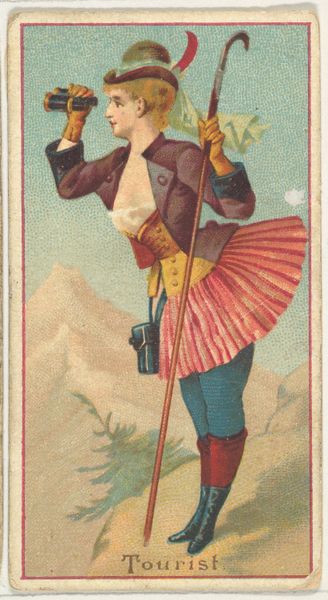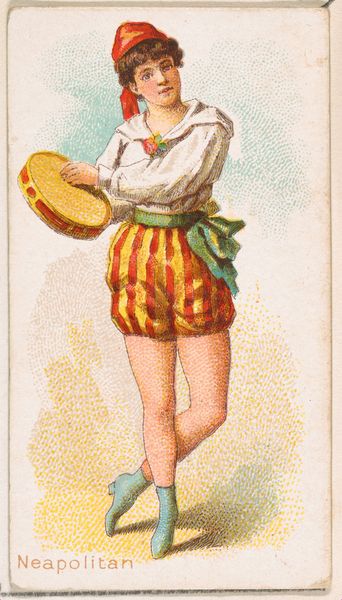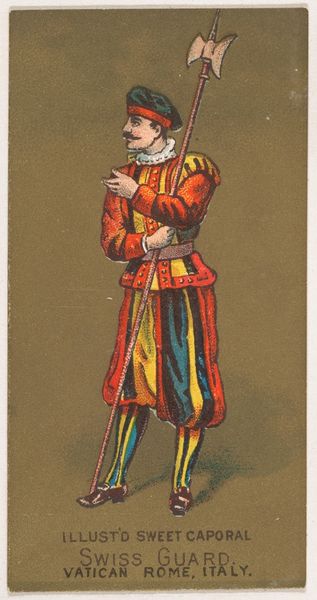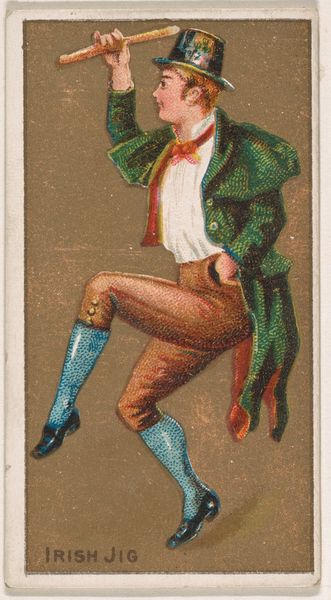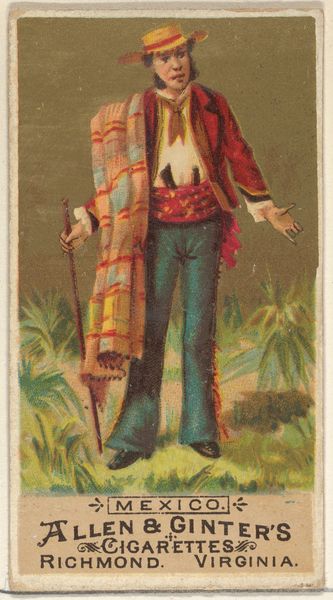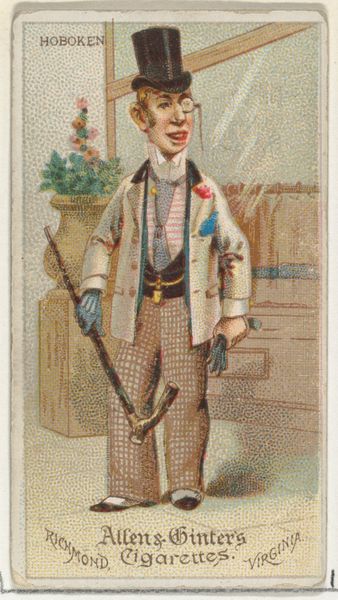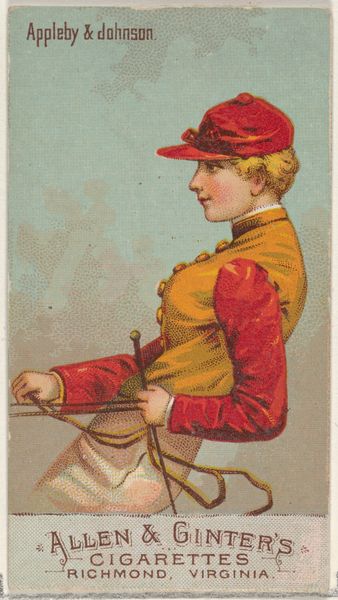
Navaja Knife, South America, from the Arms of All Nations series (N3) for Allen & Ginter Cigarettes Brands 1887
0:00
0:00
drawing, coloured-pencil, print
#
portrait
#
drawing
#
coloured-pencil
# print
#
caricature
#
coloured pencil
#
genre-painting
Dimensions: Sheet: 2 3/4 x 1 1/2 in. (7 x 3.8 cm)
Copyright: Public Domain
Editor: Here we have "Navaja Knife, South America," a color print created in 1887 by Allen & Ginter as part of their "Arms of All Nations" series for cigarette cards. The vibrant colors of the blanket clash intriguingly with the dark blade. What can we unpack in this unusual object? Curator: Well, let's think about the material conditions. This wasn't high art; it was mass-produced, distributed with cigarettes. The image itself, a romanticized "South American" figure with a large knife, was literally manufactured for consumption alongside tobacco. How does that affect our reading of the image? Editor: So, less about the artistry, more about…the capitalist machine? The commodification of culture, perhaps? Curator: Precisely! The means of production – printing technology, distribution networks of the tobacco industry – are paramount. The "artwork" becomes a vehicle for selling cigarettes, reinforcing stereotypes and exoticism for profit. This piece uses drawing, colored pencil and print. What implications arise from the combination of those media? Editor: So it is both a kind of craft due to it using drawing but then is industrialized due to print making? Curator: Exactly. And look at the materials—cheap paper, likely mass-produced inks. This challenges traditional notions of artistic value based on unique craftsmanship or precious materials. Its value lies in its role within a larger system of production, consumption, and representation. Consider the labour conditions: Who were the artists? What were their working conditions? Editor: This reframes my understanding of what to even look *for* in the artwork. The process and its economic background seem just as significant as, if not more so than, the imagery itself. Curator: That's the core of it. Understanding the materials, the mode of production, and its place in a commercial network reveals the social context embedded within this seemingly simple image.
Comments
No comments
Be the first to comment and join the conversation on the ultimate creative platform.
